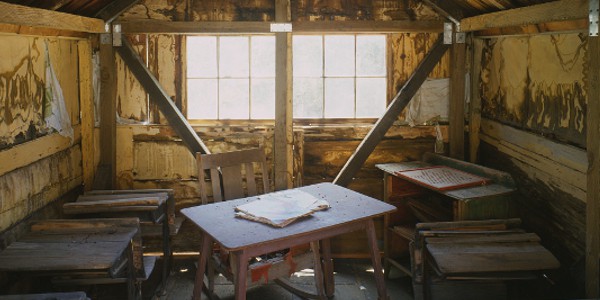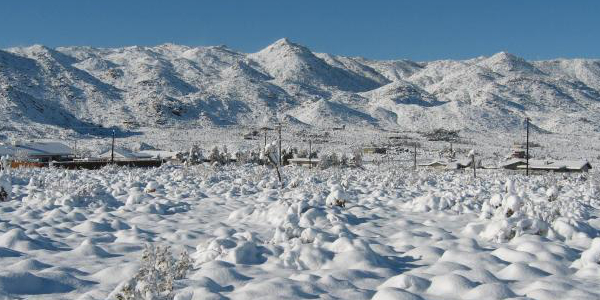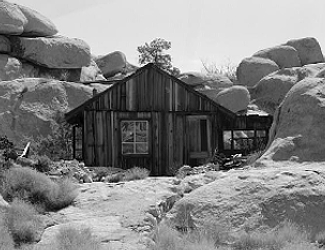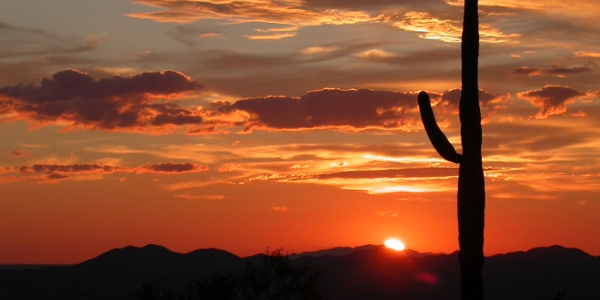
Photo above and right: Two scenes of the plant and animal life at Joshua Tree National Park. Photos courtesy National Park Service.

Joshua Tree National Park
You're only thirty minutes away from the luxury of Palm Springs, but an entire world away from the man-made glamour and into the wonder and beauty of desert nature terrain. Joshua Tree National Park contains some of the most awesome and stark beauty of the United States, plus springs, mining history, and outdoor activities galore. It's a tough place and should be visited with care, as the desert heat can wilt even the most experienced hiker. It's a great place to gaze at the stars without the haze of man. And a wonderful place to hear the stories of a ranger at night or on one of the nature walks during the day.
Sponsor this page. Your banner or text ad can fill the space above.
Click here to Sponsor the page and how to reserve your ad.

Joshua Tree Then
Yes, there was Indian culture going back 5,000 years, then the story of miners, homesteaders, and ranchers. It was not until 1936 that the land was set aside as a park over concerns that the land was being ravaged for plants in the gardens of Los Angeles residents. 825,000 acres were set aside then as a National Monument, with elevation to National Park status coming in 1994. The boundary has been subtracted from and added to several times over the years, and today protects 88 historic structures and 700 archaeological sites.
As a land of history, it races from the Pinto Indian culture when the land was wet and marshy (yes, hard to believe now), to the mining culture that prevailed when European settlement brought new settlers into the region. Witness the story of the Keys family at their ranch to get one slice of that flavor. Most of the three hundred mines on the Joshua Tree land were not that successful, although one, the Lost Horse Mine, did contain $5 million worth of gold and silver. And from 1870-1945, this was cattle grazing land, ... although it did take 17 acres to effectively graze one head. There were even hardy souls who tried their homesteading ways on this land, gaining 160 acres of free ground for three years as they tried to prove they could improve the plot and survive. Most could not in the harsh desert climate and that's probably without the realization that the San Andreas Fault lies just outside park boundaries. Probably best they did not know.
And you ask, how did it get its name. Well, Joshua Tree is a tree, of course, named Yucca brevifolia, part of the Yucca family. It was named the Joshua tree by Mormon settlers when they came to the Mohave Desert, and yes, the rock band U2 apparently liked the name. They grow slow, three inches per year in the first ten years, and only one and one half inches per year after that. And that's actually fast for a desert tree.
Photo above: Interior of the Keys Desert Queen Ranch Schoolhouse. Courtesy Historic American Buildings Survey. Library of Congress. Below: Wonderland of Rocks region at Joshua Tree National Park. Courtesy National Park Service/Robb Hannawaker.

Joshua Tree Now
Today there are over five hundred campsites, more than one hundred and ninety miles of hiking trails, and a total of nearly two hundred miles of paved and unpaved roads for you to traverse. The main road through the park, Pinto Basin Road takes you from the north end of the park, where it hooks up with Park Boulevard, all the way to the south past the Cottonwood Visitor Center and Springs area. The park has also become known as a good place for rock climbers.
T-Shirts and Souvenirs

Joshua Tree National Park T-Shirts and Souvenirs from the official merchandise of America's Best History. Great for your next western vacation or planning session.

Joshua Tree
Things You Should Not Miss
1. Take in a ranger led evening program at one of the three campgrounds where they're held, ... Jumbo Rocks, Cottonwood, and Indian Cove.
2. Take the Geology Motor Tour. There are 16 stops along the 18 mile way of the tour and some fascinating views of the park abound. It's a dirt road and only part of it can be traveled in a non-4 wheel drive vehicle. Two hour round trip. Other restrictions apply.
3. Take the Keys Ranch guided walking tour. Only available by the tour, Keys Ranch tells the story of the Keys family and their 60 year history in the rugged park. It's 90 minutes long and does have an extra fee. There are other regularly scheduled ranger walks, too. Check at the visitor center or nature center for the current schedule.
Photo above: Snow at Joshua Tree National Park. Courtesy National Park Service/Robb Hannawaker.





